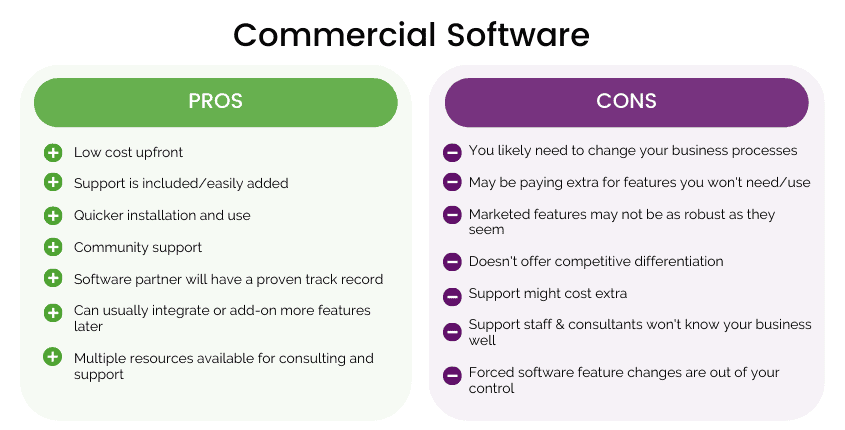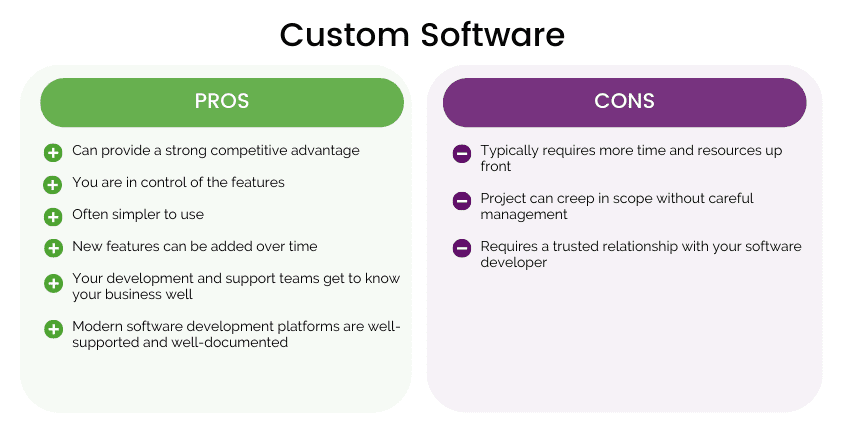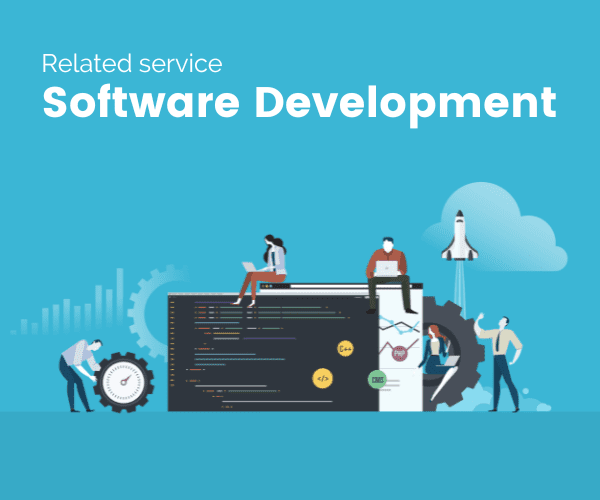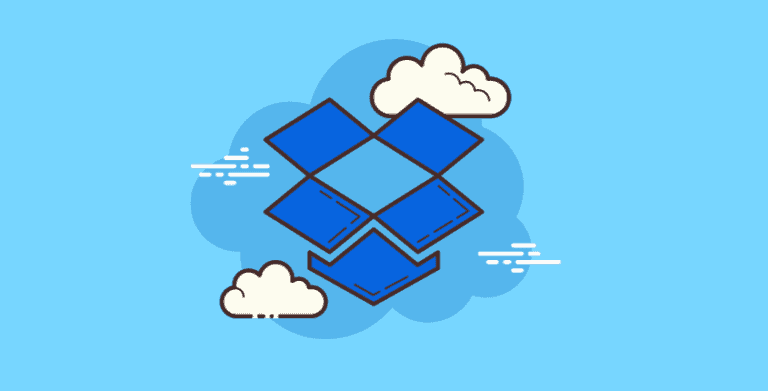Custom Software: Weighing Your Options
This post is part of our Custom Software Development series
At this point, you’ve looked for standard commercial off-the-shelf software (COTS) and you can’t find software that does what you need. You don’t want to adjust your processes so you can use a standard software program. Those processes make your business unique or more efficient.
You don’t have to be a major corporation to choose custom software development. Many small to medium businesses (SMBs) use custom programming to:
- Connect different software applications
- Add functionality to a software program
- Automate repetitive features
- Consolidate data for better insights
Examples of custom software development
The burger button
The next time you go to a fast-food chain, notice that workers have “burger buttons” to enter your order quickly. The point-of-sale software knows exactly what goes into each menu item. If the customer wants to customize their order (no onions) or take advantage of a bundled offering (burger, fries & a soda), the worker has additional buttons to quickly customize each item. The burger button custom programming enables the restaurant to:
- Serve more customers in less time, which serves as a business differentiator
- Make fewer mistakes, which builds trust with customers
- Spend less time training workers, which cuts down on payroll costs
Small business examples
For Quoting: A cleaning or installation company might want to capture square footage of each room to create a quote
For Proof: A rental company might want to have a custom inspection form with before/after pictures to be stored with the customer and asset records.
For Insight: A service company may want to send a survey out to customers after each visit, and calculate satisfaction scores by service or by technician.
Is custom software a good fit for your situation?
If you come to us and ask us for a custom software quote, the first thing we’ll do is schedule a free “Explore the possibilities” call to determine if your project is a good fit for custom software.
- What are you trying to accomplish? How are we creating something that’s different from solutions out in the marketplace today?
- What’s the rest of your technical environment look like? If we need to integrate with existing software, do we understand what that looks like?
- Are your expectations reasonable? Are the project budget and timeline in line with your expectations?
- Who internally will manage the project? What type of support do you need after the project is complete?
Through our discussions, our goal is to help you understand the tradeoffs that come with custom software so you can make an educated decision about how to proceed with your project.
Weighing your options


Calculating the rewards of custom software
Since all variables aren’t known at the beginning of a software development project, calculating your return on investment (ROI) will be an educated guess.
For financial rewards, you can look at:
- Time Savings (Estimated Time Saved) X (# of users) X (pay rate) = BENEFIT / (Cost of Software)
- More Revenue (Additional revenue potential) / (Cost of Software Development)
For non-financial rewards, many organizations take into account:
- How many additional people they can serve (non-profits)
- Boosted employee morale or customer loyalty
- Accomplishing something that would be extremely difficult / impossible to do without software
Minimizing the risks of custom software
1. Be actively engaged in the software development process. Assign an internal project manager if possible. Make sure key players have enough time be deeply involved with the project. Your team needs to be involved in the testing process and be available to clarify instructions. Most breakdowns in the software development process come down to miscommunications between the business and software development teams. For example, a client may assume that the software will check an applicant’s age or validate that the birthday is entered in a certain format, but neither will happen unless those items are specified. Having team members readily available reduces the risk of unspoken assumptions and conflicting instructions.
2. Understand that if you change the project requirements, the project budget and timeline will also change. Recognize that good ideas are normal, but that they come with associated costs. The phrase “as long as we’re doing X, we may as well do Y” is a clue that your project is expanding.
A good parallel is to think about is hiring a contractor to remodel your kitchen. If you decide to do the adjacent bathroom at the same time, the overall price and timeline of the project will increase, but still probably be less expensive than doing the bathroom as a separate project later. Like remodeling an older home, in software development, you want to plan for the unexpected.
3. Custom software is never one-and-done. Create a plan for ongoing support and maintenance of your software, either internally or with your software development team.
4. Minimize the number of connected software applications – or at least recognize that every connection point comes with the risk that something will change and the connector may break or work improperly. Even major technology companies like Microsoft make changes that inadvertently cause problems for connected applications.
5. Work with your software development company. Build a relationship. With any service, things can go wrong. How the project team handles these bumps in the road makes all the difference in the project outcome.
Considering custom software development?
As a technology advisor for growing businesses, our goal is to get you the outcomes you want. That may mean recommending solutions like:
- Off-the-shelf / SaaS business applications
- Low code apps
- Custom software development
We can help you consider all your options to make the best decision for your business.
If you are looking for packaged or custom software, or just want to explore more options, please reach out.
Frequently Asked Questions
What are advantages to custom developed software?
Custom software advantages:
+ Can provide a strong competitive advantage
+ You’re in control of the features
+ Simpler to use
+ Can add new features
+ Your support teams get to know your business well
What’s the difference between custom software and commercial software?
A commercial software option is going to be bought off the shelf and not have a lot of customizable aspects to it. A custom software will involve experts to build the software according to your wants and needs.
What are some pros and cons of commercial software?
Commercial software can be great for businesses who need a cheap and simple software solution. There are community support options and a lot of resources for support.
On the other side, you might be paying for extra features you don’t need, you will probably need to change your business processes and support might cost extra.










